#soil contamination test
Explore tagged Tumblr posts
Text
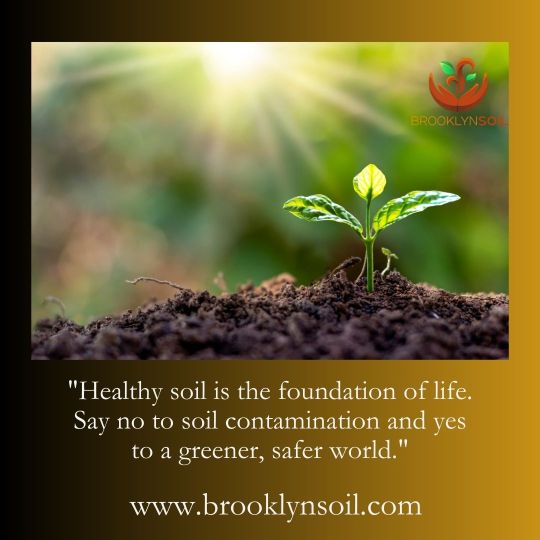
Soil Contamination in NYC
Are you concerned about soil contamination in NYC? Brooklyn Soil professional team specializes in addressing soil contamination issues, providing reliable solutions for a healthier environment. Visit now.
0 notes
Text
youtube
Growing food is a key reason for many people to garden, but a key question is how safe is my soil - and how do I find out?
Millie meets EPA chief environmental scientist Profession Mark Patrick Taylor, who runs the EPA’s GardenSafe program with colleague Hannah Elliott.
The program offers free soil tests to help people understand what’s in their soil – which can include chemicals associated with industrial pollution. If these get into soil they can then get into food and inside people’s homes – but knowing they’re there means steps can be taken to reduce health risks.
The main chemical the EPA tests for is lead, which is often found around older homes close to city centres. The contamination may come from lead paint originally used on timber buildings (but now banned) or from lead in the air from petrol fumes, before unleaded petrol was introduced.
Lead is a neurotoxin, which interferes with a person’s neurological development; children are particularly at risk. Soil is also tested for arsenic, cadmium, chromium, copper, manganese, nickel and zinc.
Hannah shows Millie how to take a soil sample, pulling back the mulch from the soil to reveal a 15cm x 15cm square of clear soil, and digging up the top 2cm of soil. The sample should be about half a cup in volume or 150grams – about the size of a tennis ball.
Hannah recommends taking three samples: from your front yard, back yard (especially in areas where children play), and vegie patch.
Samples are dried and tested for nutrient levels and structure as well as for contaminants; this information helps gardeners know what sort of soil they are growing in – sandy, loam or clay – and what fertilizers or compost it may need to grow a wider range of vegetables.
The results of the tests are de-identified and added to the MapMyEnvironment website, which shows the hotspots where contamination is most likely to be found: usually in inner-city areas and near industrial sites. This information helps the EPA manage risks to the environment.
Learning that your soil is contaminated doesn’t mean the end to growing vegetables or playing outside – the EPA advice is to:
- Grow in raised beds,
- Mulch beds and paths to reduce dust,
- Wash veggies before eating,
- Wash hands after gardening and
- Remove your shoes before going indoors.
- Avoid planting in the dripline of older houses.
If you keep chickens, make sure they’re digging a scratching in a deep bed of clean litter.
Create a safe play area for children, such as a sandpit.
What you grow also affects risk levels, because different plants absorb different chemicals at different rates.
Leafy greens absorb the most lead, for example, while fruit trees won’t be affected the same way. So silverbeet and lettuce should be grown in raised beds, while your lemon tree may grow directly in the soil.
The GardenSafe program is free for all Victorian residents. Gardeners in other states can pay a small donation to access the VegeSafe program run by Macquarie University.
For both GardenSafe and VegeSafe programs, or to test your household dust, visit https://www.360dustana...
Filmed on Wurundjeri Woi Wurrung Country in Macleod, Vic
#gardening australia#solarpunk#australia#garden#gardening#soil testing#gardensafe#lead#contaminated soil#Youtube
6 notes
·
View notes
Text
A Complete Guide to Soil Supplies and Testing in Sydney for Successful Landscaping
Integrated Environmental offers expert soil testing services in Sydney, ensuring your landscaping project starts with high-quality soil. Trust us for accurate results and tailored solutions.
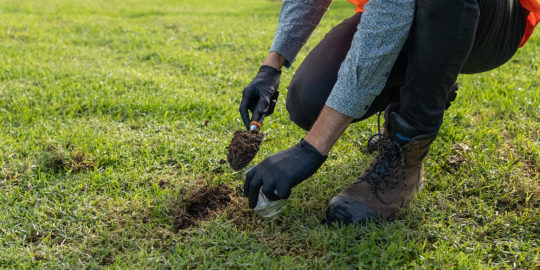
#"Soil Testing Services Sydney#Land Contamination Assessments#Land Contamination Remediation#Preliminary Site Contamination Assessments#Detailed Site Contamination Assessments#Contamination Assessment#Contamination Remediation
0 notes
Text
Addressing Groundwater Contamination in NJ | Simple Tank Services
Simple Tank Services is dedicated to addressing and resolving groundwater contamination issues in New Jersey. With our specialized expertise, we provide comprehensive solutions to ensure environmental safety and compliance. If you're dealing with concerns about Groundwater Contamination NJ, trust our experienced team for efficient and effective remediation. Contact us today to safeguard your property and the environment from groundwater contamination challenges in New Jersey.
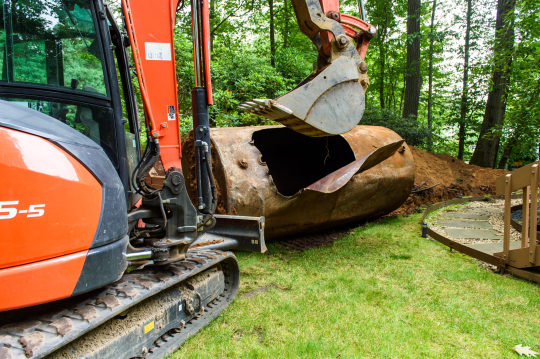
#Groundwater Contamination NJ#Groundwater Remediation NJ#Soil and Groundwater Remediation NJ#oil tank removal near me nj#oil tank removal nj#soil remediation nj#soil remediation near me nj#soil remediation services nj#oil tank removal service nj#soil remediation company nj#soil testing service nj#oil tank near me nj#oil tank nj
0 notes
Text

Revolutionizing Environmental Restoration with Delta Remediation
A New Dawn for Eco-Conscious Environmental Remediation Delta Remediation was conceived out of an unwavering commitment to foster sustainable and eco-friendly solutions for environmental restoration. Anchored by the conviction that future generations deserve a healthier planet, Delta Remediation has blazed a trail as a trailblazer in the sector. By launching a series of groundbreaking products and services, the company has effectively confronted hydrocarbon contamination in both soil and water.
The Pillars of Delta Remediation: Sustainability, Innovation, and Dedication The driving forces behind Delta Remediation's actions are its foundational principles: the pursuit of sustainable environmental solutions, relentless innovation, and a resolute commitment to ecological welfare.
A Close Look at Delta Remediation’s Groundbreaking Technology The BioLogix Solution by Delta Remediation represents the company’s technological prowess and innovative spirit.
BioLogix Salt Binder: The Vanguard of Salt Remediation This product stands at the forefront of environmentally-friendly solutions to rampant salt-related environmental challenges.
BioLogix Surfactant: An Eco-Compliant Hydrocarbon Liberator Crafted to free hydrocarbons from soil and usher them to the surface, this biodegradable surfactant is neither ethoxylated nor butyl-based, underscoring its eco-compliance.
BioLogix Microbes: The Microscopic Solution The BioLogix Surfactant is amplified by BioLogix Microbes, a powerful concoction of live Pseudomonas bacteria strains. These microbes possess an innate knack for degrading hydrocarbons, cementing their status as a crucial part of the BioLogix solution.
ScreenLogix TPH Test Kit: The Quick Contamination Assessor Delta Remediation’s innovative streak extends to the ScreenLogix Total Petroleum Hydrocarbon (TPH) soil test kit. This ingenious device empowers users to promptly identify the nature and level of hydrocarbon contamination in soils.
The Comprehensive Suite of Services by Delta Remediation Delta Remediation offers an extensive range of services to combat a myriad of environmental challenges.
Soil Remediation: The War Against Soil Contaminants The company takes pride in its flagship service – soil remediation, aimed at purging soil of pollutants such as hydrocarbons, heavy metals, pesticides, cyanides, volatiles, creosote, and semi-volatiles.
Bioremediation: Bacteria to the Rescue Here, bacteria serve as absorbents and decomposers of hydrocarbons and other pollutants. This technique proves highly effective in soils that uphold a temperature of approximately 70 degrees F and receive periodic rainfall for optimal moisture.
Thermal Soil Remediation: Evaporating Impurities This service heats up the contaminated soil in a Process Treatment Unit (PTU), causing the hydrocarbon impurities and water to evaporate.
Encapsulation: Isolation Over Removal As an alternative strategy to tackle soil contamination, encapsulation encloses contaminants to prevent their spread to uncontaminated areas.
Groundwater and Water Remediation: Preserving our Water Sources Delta Remediation adopts natural remediation processes to expunge contaminants from water and groundwater with minimal environmental impact, safeguarding our invaluable water resources.
Oil Spill and Sulfolane Remediation: Minimizing Ecological Damage Delta Remediation's expertise extends to managing oil spills and sulfolane contamination, with a focus on mitigating environmental harm and protecting local ecosystems.
The Delta Remediation Promise: A Blend of Innovation and Responsibility Innovation is the lifeblood of Delta Remediation. The company ceaselessly ventures into the unexplored territories of environmental remediation, delivering not just effective but also sustainable solutions.
A Strong Advocate for Sustainability Delta Remediation endorses remediation over relocation as a more sustainable and responsible response to environmental challenges. This ethos, coupled with stringent safety and quality norms, cements their standing as pioneers in environmental remediation.
Conclusion Delta Remediation persistently challenges established norms and redefines the standards of environmental remediation. Given their unwavering dedication to creating a cleaner, safer planet, the future of Delta Remediation promises to be as innovative and impactful as its illustrious past.
#Environmental Restoration#Delta Remediation#Sustainable Solutions#Eco-Friendly Remediation#Innovation in Environmental Restoration#Hydrocarbon Contamination#BioLogix Solution#Salt Remediation#Eco-Compliant Surfactant#Microbial Remediation#Soil Testing#Soil Remediation#Bioremediation#Thermal Soil Remediation#Encapsulation#Water Remediation#Oil Spill Remediation#Sulfolane Remediation#Sustainability Advocate#Remediation Over Relocation#Innovation in Remediation#Eco-Conscious Restoration#Groundbreaking Technology#Environmental Challenges#Future of Environmental Remediation
0 notes
Text
Shen Yuan Shixiong au, but he is at a weird place in the time line and accidentally starts a new peak as a teenager while Luò Bīnghé is already in Qing Jing
It is the flowers peak- botany peak- crimes against humanity peak (if he's being honest). Mu Qingfang knows how to heal the human body and use medical herbs. Shen Yuan knows how to curse the human body and manipulate medical herbs
Everyone knows medicine is just poison in deliberate quantities, so they have a symbiotic relationship. Shen Qingqiu is low-key mad this kid is stealing his place as the guy with ridiculous quantities of knowledge for questionable purposes
Walking in this new peak unannounced is about as dangerous as falling into the endless abyss. They have frost forming flowers (that can freeze over an entire human body in five seconds) cooling plants from the Northern Desert of the demon realm. They have plants that suck acid from the soil to manage pH levels (but spit that acid if disturbed). They have a soap bearing plant (luò Bīnghé used it once to clean up before papapa) that is sucking up bases. They have mist shooting plants (mild hallucinogen, but they also have airway and throat coating fruit by the door to that greenhouse which prevents it being absorbed) for humidity
In a world where sex-pollen flowers rule the land, Shen Yuan is working to rule them, which, quite frankly, no one considered possible. This man claims he has never been sex-pollened, and no one quite believes him. But, well... he's never shown up at Qian Cao and no one is brave enough to test him using the virginity detecting sword
This all started from Shen Yuan, at the time a passable quqin player on Qing Jing, discovering a flower mentioned only on one page of one addition of PIDW, which he always thought would be useful for defense against aphrodisiacs due to its mind clearing properties, yet which was never brought up again. He proceeds to save one of his shimeis from a highly embarrassing incident
He is profusely thanked for his quick thinking, but Qing Jing isn't interested and the flower is too finicky to keep up a stock on Qian Cao. Shen Yuan, deeply fearing another incident and having a bit too much time on his hands, decides to set up his own garden on a small peak considered too contaminated to use for anything but long term storage. Things escalate
2K notes
·
View notes
Text
I included some highlights from the article here, but I highly recommend reading this whole thing.
We hear so much about how wildfires that move into towns or cities devastate communities--but once the blazes have finally been extinguished the news usually moves on to the next crisis and we don't get to hear about how these communities and outside helpers rally together to rebuild afterwards. Including regrowing the trees and gardens that help provide shade and food security to neighborhoods.
From the article:
"The Altadena Seed Library, a network of seed exchange boxes, is leading the charge. Raj’s project began in 2021, with several little seed libraries stationed around the community. Seed libraries mimic regular libraries, but instead of books, people check out (and use) envelopes of seeds for free. Now, Raj and other volunteers are working on a game plan for regrowing the lawns, gardens, and urban green spaces that combat shade inequity and increase food sovereignty in their neighborhood — and looking to learn from other communities that have also seen their landscapes drastically altered by destructive wildfires. Donated seeds and tools are pouring in from locals and places around the country, as well as compost, pots, trees, and personal protective equipment for people cleaning up the hazardous waste leftover from burned homes and melted cars. “We’ve had a pretty overwhelming response,” Raj said. “People have been so, so generous.” Individual volunteers and organizations like Club Gay Gardens, a nonprofit in nearby Glendale, are helping sort the donated seeds. [...] Replanting efforts in Paradise, California, where the Camp Fire killed 85 people in 2018, and Lahaina, Hawai‘i, where a wildfire killed 102 people in 2023, offer inspiration as to what responsible reseeding can look like post-fire. Wildfire survivors from up and down the West Coast have already reached out to Raj, offering to help Altadena. “It’s so unfortunate to be bonded in that way,” Raj said. “It also feels really beautiful that those connections can grow out of something so tragic.” The Federal Emergency Management Agency helped test for soil toxicity in Paradise, eventually scraping the contaminated top layers away. But replanting efforts were left to residents. “None of this would have happened if it weren’t for these community groups that all came together,” said Jennifer Peterson, a Paradise local who saw her house, plus a seed library and two community gardens she worked on, destroyed. Peterson and other community members worked hard to safely reestablish old food sources. In 2020, several groups and 300 volunteers joined forces to rebuild — in one day — a nonprofit arts and culture center whose public gardens provide compost, seeds, and produce for free. Grant money allowed organizations like the Butte County Local Food Network to prepare 150 garden boxes and deliver them to people’s homes, complete with new soil and plants. Being part of efforts to regrow people’s food — and her front yard, which now teems with native wildflowers whose seeds survived the fire — has helped Peterson heal. “It was kind of like therapy for everybody,” she said. In Lahaina, on Maui, where an estimated 150,000 trees burned, replanting efforts so far have focused on fruit trees that will eventually provide food and shade again, said Duane Sparkman, chair of the Maui County Arborist Committee and cofounder of Treecovery Hawaii, a nonprofit focused on replanting Lahaina. So far, Treecovery Hawaii has raised half a million dollars to purchase trees at full price from local nurseries and give them to families who are rebuilding. The organization has established several hubs to grow more trees, and Sparkman said he’d like to buy a larger nursery space on central Maui. A detailed planting plan created by Maui County lays out what types of trees should get planted on the island, as well as the care they need. Over 200 trees have been planted or are in pots on-site, ready to be put in the ground. That includes a mouthwatering array of fruit trees — mango, jackfruit, starfruit, avocado, citrus, and banana — fragrant plumeria and orchid trees, and native species like wiliwili, milo, koa, and lauhala trees. “Knowing that we’re going to be part of what’s eventually going to be the canopy for our grandchildren is immense for us,” Sparkman said."
#wildfire#wildfire rebuilding#climate change#global warming#hope#hopepunk#solarpunk#gardening#food security#climate resilience#widlfire recovery#community#food garden#environment#ecology#food sovereignty
245 notes
·
View notes
Text
Writing Notes: Wound Care
Wound care - involves cleaning a wound, flushing or irrigating it with pressurized water or an antiseptic solution, and applying or changing a dressing.
Immediate Wound Care
Applying direct pressure to control any bleeding
Examining the wound for dirt and foreign objects after any bleeding has stopped
Cleaning the wound by gently flooding it with saline solution if available, with bottled water, or with clean running water
Gently cleansing the area around the wound with soap and clean water
Patting the area dry and covering it with an adhesive bandage or clean dry cloth
Leaving uncovered bites, punctures, and wounds that cannot be properly cleaned to prevent trapping bacteria that could result in infection

Aftercare
Aimed at preventing infection.
Puncture wounds or contaminated wounds may require a tetanus booster shot.
Dressings should never be reused.
Any soiled laundry from wound care procedures should be washed separately from other laundry, possibly with bleach.
Sometimes a wound-drainage culture is used to test for bacteria, fungi, or viruses in open wounds from punctures, cuts, tears, or surgical incisions or abscesses.
Abscesses require making a small incision in the skin to obtain pus or fluid from the wound.
The tip of a sterile cotton swab or a syringe and small needle (needle aspiration) is used to remove the sample for culturing.
Some Terminology
Aerobe—Bacteria that require oxygen to live.
Alginate—Colloidal substances from marine brown algae, especially giant kelp, that are used for wound dressings.
Anaerobe—Bacteria that live only where there is no oxygen.
Antiseptic—Chemicals applied to the skin to destroy bacteria and prevent infection.
Autolytic—Self-digestion; breakdown of tissue by the body’s own enzymes.
Debridement—The removal of cut, dead, or contaminated tissue.
Dehiscence—The opening of sutures from a surgical incision.
Dressing—The covering of a wound.
Exudate—Drainage from a wound; an exudative wound is one that drains fluid and pus.
Hydrocolloid—Dressing material that turns into a gel when combined with watery drainage.
Hydrogel—A water-based dressing material.
Hydrophilic—Dressing material that absorbs water.
Irrigation—Flushing or washing out a wound.
Necrotic—Dead tissue.
Normal flora—The mixture of bacteria normally found at specific body sites.
Normal saline—Physiological saline; a solution of 0.9% sodium chloride, the approximate salt concentrate of blood and tissues.
Tetanus—Lockjaw; a rare but often fatal infection caused by the bacterium Clostridium tetani that lives in soil, dust, and manure.
Source ⚜ More: Writing Notes & References More: Writing Realistic Injuries ⚜ On Anatomy ⚜ On Wounds
#writing notes#wound#writeblr#dark academia#spilled ink#literature#writers on tumblr#writing reference#poets on tumblr#writing prompt#poetry#creative writing#terminology#writing inspiration#writing ideas#thomas eakins#light academia#writing resources
378 notes
·
View notes
Text
of fucking course.....they fucking coated paper straws with pfas......its a fucking nightmare
--
Long-lasting 'forever chemicals', which can cause damaging health issues, found in 18/20 brands of paper straws
In the first analysis of its kind in Europe, and only the second in the world, Belgian researchers tested 39 brands of straws for the group of synthetic chemicals known as poly- and perfluoroalkyl substances (PFAS).
PFAS were found in the majority of the straws tested and were most common in those made from paper and bamboo, the study, published in the peer-reviewed journal Food Additives and Contaminants, found.
PFAS are used to make everyday products, from outdoor clothing to non-stick pans, resistant to water, heat and stains. They are, however, potentially harmful to people, wildlife and the environment.
They break down very slowly over time and can persist over thousands of years in the environment, a property that has led to them being known as "forever chemicals."
They have been associated with a number of health problems, including lower response to vaccines, lower birth weight, thyroid disease, increased cholesterol levels, liver damage, kidney cancer and testicular cancer.
"Straws made from plant-based materials, such as paper and bamboo, are often advertised as being more sustainable and eco-friendly than those made from plastic," says researcher Dr Thimo Groffen, an environmental scientist at the University of Antwerp, who is involved in this study.
"However, the presence of PFAS in these straws means that's not necessarily true."
A growing number of countries, including the UK and Belgium, have banned sale of single-use plastic products, including drinking straws, and plant-based versions have become popular alternatives.
A recent study found PFAS in plant-based drinking straws in the US. Dr Groffen and colleagues wanted to find out if the same was true of those on sale in Belgium.
To explore this further, the research team purchased 39 different brands of drinking straw made from five materials -- paper, bamboo, glass, stainless steel and plastic.
The straws, which were mainly obtained from shops, supermarkets and fast-food restaurants, then underwent two rounds of testing for PFAS.
The majority of the brands (27/39, 69%) contained PFAS, with 18 different PFAS detected in total.
The paper straws were most likely to contain PFAS, with the chemicals detected in 18/20 (90%) of the brands tested. PFAS were also detected in 4/5 (80%) brands of bamboo straw, 3/4 (75%) of the plastic straw brands and 2/5 (40%) brands of glass straw. They were not detected in any of the five types of steel straw tested.
The most commonly found PFAS, perfluorooctanoic acid (PFOA), has been banned globally since 2020.
Also detected were trifluoroacetic acid (TFA) and trifluoromethanesulfonic acid (TFMS), "ultra-short chain" PFAS which are highly water soluble and so might leach out of straws into drinks.
The PFAS concentrations were low and, bearing in mind that most people tend to only use straws occasionally, pose a limited risk to human health. However, PFAS can remain in the body for many years and concentrations can build up over time.
"Small amounts of PFAS, while not harmful in themselves, can add to the chemical load already present in the body," says Dr Groffen.
It isn't known whether the PFAS were added to the straws by the manufacturers for waterproofing or whether were the result of contamination. Potential sources of contamination include the soil the plant-based materials were grown in and the water used in the manufacturing process.
However, the presence of the chemicals in almost every brand of paper straw means it is likely that it was, in some cases, being used as a water-repellent coating, say the researchers.
The study's other limitations include not looking at whether the PFAS would leach out of the straws into liquids.
Dr Groffen concludes: "The presence of PFAS in paper and bamboo straws shows they are not necessarily biodegradable.
"We did not detect any PFAS in stainless steel straws, so I would advise consumers to use this type of straw -- or just avoid using straws at all."
679 notes
·
View notes
Text
Started the day by reading this article from the NY times, and I'm frankly, disturbed.
Some highlights:
"For decades, farmers across America have been encouraged by the federal government to spread municipal sewage on millions of acres of farmland as fertilizer. It was rich in nutrients, and it helped keep the sludge out of landfills."
Which I knew, and I knew that there were concerns about contaminants from like, the medications people were on. But human waste is part of the nutrient cycle, and it always made sense to me that it should be throughly composted and returned to agricultural lands, and I assumed that people in general were taking the steps necessary to make it safe.
But here's what I didn't know:
"The 1972 Clean Water Act had required industrial plants to start sending their wastewater to treatment plants instead of releasing it into rivers and streams, which was a win for the environment but also produced vast new quantities of sludge that had to go somewhere."
Which, yay, no longer polluting bodies of water, but now that means we're applying industrial waste water to agricultural lands. And have been since 1972. Which leads to this situation, among many others, I'm sure:
"The sludge that allegedly contaminated the Colemans’ farm came from the City of Fort Worth water district, which treats sewage from more than 1.2 million people, city records show. Its facility also accepts effluent from industries including aerospace, defense, oil and gas, and auto manufacturing. Synagro takes the sludge and treats it (though not for PFAS, as it’s not required by law) then distributes it as fertilizer."
So here's what some states are doing:
"In Michigan, among the first states to investigate the chemicals in sludge fertilizer, officials shut down one farm where tests found particularly high concentrations in the soil and in cattle that grazed on the land. This year, the state prohibited the property from ever again being used for agriculture. Michigan hasn’t conducted widespread testing at other farms, partly out of concern for the economic effects on its agriculture industry.
In 2022, Maine banned the use of sewage sludge on agricultural fields. It was the first state to do so and is the only state to systematically test farms for the chemicals. Investigators have found contamination on at least 68 of the more than 100 farms checked so far, with some 1,000 sites still to be tested.
“Investigating PFAS is like opening Pandora’s box,” said Nancy McBrady, deputy commissioner of Maine’s Department of Agriculture."
This is fun:
"The E.P.A. is currently studying the risks posed by PFAS in sludge fertilizer (which the industry calls biosolids) to determine if new rules are necessary.
The agency continues to promote its use on cropland, though elsewhere it has started to take action. In April, it ordered utilities to slash PFAS levels in drinking water to near zero and designated two types of the chemical as hazardous substances that must be cleaned up by polluters. The agency now says there is no safe level of PFAS for humans...
It’s difficult to know how much fertilizer sludge is used nationwide, and E.P.A. data is incomplete. The fertilizer industry says more than 2 million dry tons were used on 4.6 million acres of farmland in 2018. And it estimates that farmers have obtained permits to use sewage sludge on nearly 70 million acres, or about a fifth of all U.S. agricultural land."
There's more, but I wanted to condense it at least a little bit. I am glad we're raising awareness, and I'm glad we're starting to regular the amount in our drinking water, and I hope that we'll find a way to actually deal with PFAS. I am so frustrated that people are exposed in the first place, and in nigh inescapable ways.
Also, to all those people who were like, oh, organic isn't at all healthier for consumers? Guess what the organic standards don't allow to be applied?
140 notes
·
View notes
Text
Understanding Land Remediation and Its Importance in Construction Projects
Integrated Environmental offers expert soil testing services in Sydney to assess potential land contamination. Ensure a safe start for your construction project with our services.
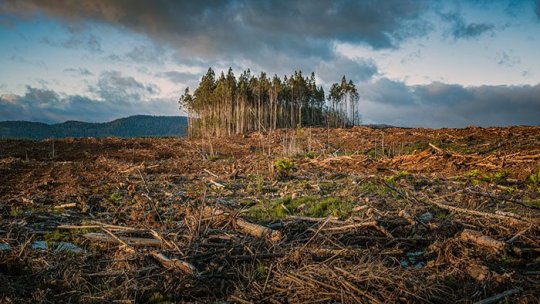
#Soil Testing Services Sydney#Land Contamination Assessments#Land Contamination Remediation#Preliminary Site Contamination Assessments#Detailed Site Contamination Assessments#Contamination Assessment#Contamination Remediation
0 notes
Text
Groundwater Contamination Solutions in New Jersey | Simple Tank Services
Simple Tank Services specializes in addressing groundwater contamination in NJ. Our dedicated team offers effective groundwater remediation and soil and groundwater remediation services to restore environmental safety. Trust us to resolve groundwater contamination issues in New Jersey efficiently. Contact us today for expert solutions to safeguard your property and the environment.

#Groundwater Contamination NJ#Groundwater Remediation NJ#Soil and Groundwater Remediation NJ#oil tank removal near me nj#oil tank removal nj#soil remediation company nj#soil remediation nj#soil remediation services nj#soil remediation near me nj#soil testing service nj#oil tank removal service nj#oil tank near me nj#oil tank nj
0 notes
Text
Ectober Day 8 - Toy Spaceship
Word Count: 1,663
AO3
Tags: Angst, Mention of Past Injury
Maddie finds a small worn toy spaceship buried in the park. A children’s toy. She wasn’t expecting the owner to be Phantom.
At first, Maddie thinks the rocket is just a piece of rusted metal. How a piece of rusted metal might’ve got there in the first place, she doesn’t consider.
The first thing she thinks is that it’s a safety hazard, with the screeching of children’s laughter ringing in her ears. The park is within eye—and earshot. A stray toddler only needs to wander over and get a cut, or worse.
She reaches down and expects sharp metal to prod her fingertips, except it doesn’t. Another tug and it’s out of the damp soil.
What is it? She thinks, turning it around in her hands. Half the bottom is covered with muck and stringy roots. It’s cylindrical, curving into a point at the top. What she thought was rust, is dark orange paint. What she can only describe as ‘fins’ jut out at the bottom.
Whatever it is, it’s seen better days.
And then she remembers.
Danny’s fifth birthday, the first time they’d had a big occasion for his birthday. They’d taken him to the observatory, because even back then he knew what he wanted to do.
Nowadays, Maddie’s not too sure of that anymore. He’s…drifted away. Always skipping lessons and never being where he should.
But Danny’s birthday gift had been a rocket. A little orange rocket with a lid that flipped open at the top. Maddie presses about a quarter down of the toy, and sure enough there’s a hinge.
Curious, she tries opening the top, but it’s rusted shut.
Can’t have expected anything else. She sighs, looking back over to the park. Perhaps one of the children there dropped it?
After all, it can’t be Danny’s. Despite everything, even with his failing grades and constant truancy, he still has his shelf of rockets.
He’d never let one of them get in such a state, given his attention to detail for painting them and adding stickers.
It could be a ghost related? Maddie turns the rocket over in her hands. There’s no signs of ectoplasm, but it could be contaminated.
Worth taking to the lab for a checkup. With one final glance at the rocket, Maddie begins the walk back to Fentonworks.
—
It’s the next day when Maddie debates what to do with the rocket. Tests last night showed that it is contaminated to a considerable degree.
“It could make a good bit of research.” Maddie mumbles, staring at the rocket laid out on the lab bench, “—why is it in that park? Who does it belong to?”
Suddenly, the temperature of the lab drops.
Maddie tenses, instinctively reaching for the ectogun on her hip, but her hand simply meets air. Right. Her and Jack had agreed to stop carrying ectoguns after their truce with Phantom.
It’s been a rocky few months, but there is some progress. Nowadays, the ghost doesn’t shy away when they’re hunting, even sometimes having conversations.
Perhaps Phantom will know who the rocket belongs to. He seems to have good knowledge of the town, she thinks.
But for now, she’s only focused on the current problem.
“Who’s there?” She swivels around, eyes scanning the room for any sense of an aura, cold spots.
Something is definitely in the lab. Hairs prickling on her neck, Maddie resists the urge to run into the weapons storage, come out guns blazing.
Her and Jack meant keeping a truce. And that includes no weapons (excluding life-threatening situations) even when Phantom isn’t present.
“Wow! I’m surprised you didn’t run for the weapons.” Suddenly, Phantom appears infront of her, green eyes gleaming and a cheeky grin plastered on his face.
“What do you want?” She asks, tone biting more than intended.
“Geez, don’t worry! I thought we were past the accusation stage.” Phantom folds his arms, hovering down to the floor.
“We are.” Maddie releases her grip from the bench, “I just didn't expect you here.”
She can’t help but notice Phantom subtly floating to the right of her, eyes clearly not focused despite his conversing.
“Fair…” the ghost trails off, craning his neck.
Instinctively, she turns, curious as to what’s caught his eyes.
Ah. The rocket.
Something he’s probably never seen before and is intrigued about.
“Where’d you get that?” Is expectantly the next question.
“This?” Maddie asks, as if the answer isn’t obvious, picking up the small toy in her hands, “A toy rocket, I think?”
”Yeah, it is.” Phantom nods, confirming the obvious. “It’s mine.”
”Yours?!” Maddie clutches the rocket tighter, unable to muster the surprise in her tone, “Did you find it?”
”No.” Phantom drops to the floor with a light thump, eyes fixated on the rocket. “I—uh—got it when I was alive.”
”When you were alive?” She parrots, “I though ghosts—“
”Couldn’t feel pain, couldn’t remember their past lives. Yeah.” Phantom grimaces, hand tracing a line across his stomach.
Maddie remembers, stomach flipping, that she gave him a severe wound there once with a Fenton Spear.
For some reason, her mind trails back to Danny. Him being five, so excited to visit the observatory for his birthday. Much more excited about that than his favourite fudge cake. How when they’d went into the gift shop, the bright orange and blue rocket was what had caught his attention. He didn’t want anything else, just that rocket.
And at some point, Phantom had that experience. Perhaps not a birthday, or at the observatory. But he saw the little rocket in her hands on a shelf one day, and it gave him the same joy as it had her own son.
Probably still does, if it was stubborn enough to follow him into the afterlife.
That brings another thought which she instantly shoves back down. What if he was killed whilst playing with the rocket?
”How—how did you get this, then?” Maddie regards Phantom’s confused expression, “I mean, if you had it when you were alive, then how did it…join…you as a ghost?”
”I did always say it had a mind of its own.” Phantom chuckles, before advancing forward.
Maddie obliges, allowing the ghost to take it, arms falling awkwardly by her side. It is his after all.
After a few seconds of Phantom examining his reunited possession, he shrugs.
“None of my other stuff reacts like this does. I mean, yeah, it’s important, but this rocket is connected, somehow? Like, my core can sense where it is.”
”That’s why you knew to come here.” Maddie nods, pieces falling into place.
”Yeah. I went flying with it a few days ago on patrol. I guess I must’ve dropped it at the park, because my core was telling me to go there.” Phantom explains, “And then my core was telling me to go here, so I figured either you or D—Jack picked it up.”
”Perhaps it’s related to your obsession? A ghost’s core is primarily formed from an obsession, after all.” Maddie suggests, looking over at the strewn out papers on the desk. All their theories and explanations that will have to be rewritten about ghosts. Even from this simple interaction.
So many things proved wrong.
The ghost ‘hmms’ then nods, seemingly satisfied. “That could be it, y’know? I’m just glad it was you who got it and not like…some kid. I’d have a harder time getting it back.”
”Well, don’t be too sure.” Maddie quips, “It’s quite an interesting little piece. I’ve never heard of a physical object connected to a ghost through their core, especially from their past life.”
”Well, what can I say? I’m…unique.” Phantom shrugs, suddenly looking more like the awkward teenager he is, which took her and Jack much too long to notice.
An awkward silence fills the lab as Maddie considers what to say, drumming her hands on the table.
”Well, I better get going. Thanks—“
”How did you get the rocket?” Maddie blurts out to a bewildered Phantom.
”It’s just, my son, Danny. He has that exact same rocket. We went to the observatory when he was five, and when he saw it, well that was it. Absolutely infatuated with the thing! He’s still got it on his shelf to this day. I think his is in better condition than that, no offence.”
”Well, would you know it?” Phantom quirks a crooked grin, “I got mine at the observatory for my birthday too. I knew when I laid eyes on it that was what I wanted. My Dad thought I’d want cake or something, but my Mom knew straightaway.”
Just like Danny’s experience.
Phantom looks relaxed, shoulders slack. There’s a colour to his cheeks, light dusting of green freckles and a sparkle to his eyes. It’s nice, Maddie thinks. A far cry from a few months ago when he was worn down, pale, sunken-in by their weapons.
Perhaps talking about the good things about his family has helped, too. One thing undoubtably in Maddie’s mind is that Phantom didn’t have a good home life as a child.
It has to be. A teenager dies, becomes a ghost acting-vigilante. In life he couldn’t be saved, so spends the afterlife dedicated to seeking justice.
”Thanks.” Phantom grins again, and as quick as he appeared, is gone.
Sighing, Maddie lets herself lean against the bench, glancing at the sea of research papers and dogeared notes. All the news theories from her conversation with Phantom and discovery of the rocket swirl around.
She could sit here in the lab for a good few hours, developing research and new alternatives.
Or, instead, Maddie walks to the lab stairs and starts going up. She decides to go up to Danny’s room and talk about the rockets on his shelf with him.
Her children are growing up, distancing by each passing year, especially Danny.
After all, Phantom’s parents likely never knew that their sons life would be cut so short. One minute talking about rockets, the next gone, as if he was never there.
Who knows how long she has left with Danny?
—
A/N: Surprised I’ve made it to day 8 and four works to be honest. This was the first prompt I had planned for ectober. Inspired by A Ghost Story by Cordia, one of my favourite fics ever!
49 notes
·
View notes
Text
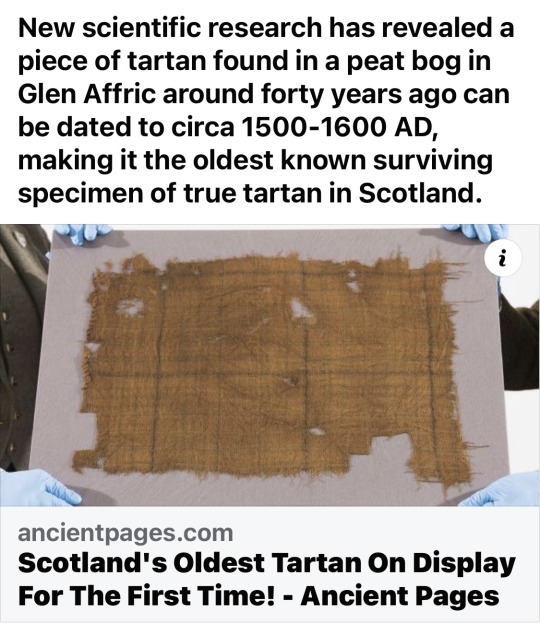
Jan Bartek - AncientPages.com - New scientific research has revealed a piece of tartan found in a peat bog in Glen Affric around forty years ago can be dated to circa 1500-1600 AD, making it the oldest known surviving specimen of true tartan in Scotland.
The Scottish Tartans Authority commissioned Dye Analysis and Radiocarbon testing on the woolen textile to prove its age.
Scotland's Oldest Tartan On Display For The First Time!
Glen Affric tartan - Scotland's oldest-known true tartan discovered by The Scottish Tartans Authority to go on display for the first time at V&A Dundee's Tartan exhibition.
Credit: Alan Richardson Pix-AR
The first investigation was dye analysis carried out by analytical scientists from National Museums Scotland. Using high-resolution digital microscopy, four colors were visually identified for dye analysis: green, brown, and possibly red and yellow.
The dye analysis confirmed the use of indigo/woad in the green but was inconclusive for the other colors, probably due to the dyestuff degradation state. However, no artificial or semi-synthetic dyestuffs were involved in making the tartan, which pointed to a date of pre-1750s.
Further clarification on the age of the tartan involved radiocarbon testing at the SUERC Radiocarbon Laboratory in East Kilbride. The process involved washing out all the peat staining, which would have otherwise contaminated the carbon content of the textile.
The Radiocarbon testing results identified a broad date range between 1500 and 1655 AD, with the period between 1500 and 1600 AD the most probable. This makes it the oldest-known piece of true tartan found in Scotland – the Falkirk ‘tartan,’ dating from the early third century AD, is actually a simpler check pattern woven using undyed yarns.
The Glen Affric tartan, which measures around 55cm by 43cm, is now on display for the first time at V&A Dundee’s Tartan exhibition.
by TaboolaSponsored Links
The piece will be the oldest exhibit among more than 300 objects. The exhibition examines tartan’s universal and enduring appeal through iconic and everyday examples of fashion, architecture, graphic and product design, photography, furniture, glass and ceramics, film, performance, and art.
“The testing process has taken nearly six months, but the effort was well worth it, and we are thrilled with the results!
In Scotland, surviving examples of old textiles are rare as the soil is not conducive to their survival. As the piece was buried in peat, meaning it had no exposure to air and was therefore preserved.
The tartan has several colors with multiple stripes of different sizes, and so it corresponds to what people would think of as a true tartan.
“Although we can theorize about the Glen Affric tartan, it’s important that we don’t construct history around it. Although Clan Chisholm controlled that area, we cannot attribute the tartan to them as we don’t know who owned it.
“The potential presence of red, a color that Gaels considered a status symbol, is interesting because of the more rustic nature of the cloth. This piece is not something you would associate with a king or someone of high status; it is more likely to be an outdoor working garment," Peter MacDonald, Head of Research and Collections at The Scottish Tartans Authorit said.
Scotland's Oldest Tartan On Display For The First Time!
New scientific research has revealed a piece of tartan found in a peat bog in Glen Affric, Scotland around forty years ago can be dated to circa 1500-1600 AD, making it the oldest known surviving specimen of true tartan in Scotland. Credit: Credit: Alan Richardson Pix-AR
“The Glen Affric tartan is clearly a piece of national and historical significance. It is likely to date to the reign of James V, Mary Queen of Scots, or James VI/I. “There is no other known surviving piece of tartan from this period of this age. It's a remarkable discovery and deserves national attention and preservation. “It also deserves to be seen and we’re delighted that it is to be included in the Tartan exhibition at V&A Dundee,” John McLeish, Chair of The Scottish Tartans Authority, said.
“We knew The Scottish Tartans Authority had a tremendous archive of material and we initially approached them to ask if they knew of any examples of 'proto-tartans' that could be loaned to the exhibition.
I'm delighted the exhibition has encouraged further exploration into this plaid portion and very thankful for The Scottish Tartans Authority's backing and support in uncovering such a historic find.
To be able to exhibit the Glen Affric tartan is immensely important in understanding the textile traditions from which modern tartan derives, and I'm sure visitors will appreciate seeing this on public display for the very first time," James Wylie, curator at V&A Dundee said.
Tartan at V&A Dundee opens on Saturday, 1 April, until 14 January 2024.
Written by Jan Bartek - AncientPages.com Staff Writer
Source: Facebook
Source: AncientPages.com
240 notes
·
View notes
Text
Researchers have developed a new optical sensor that provides a simple way to achieve real-time detection of extremely low levels of arsenic in water. The technology could enable household testing for arsenic, empowering individuals to monitor their own water quality. Arsenic contamination is a serious environmental and public health challenge affecting millions of people around the world. This contamination occurs when natural geological processes release arsenic from rocks and soil into groundwater and can be exacerbated by mining, industrial waste disposal and use of arsenic-based pesticides. "Consuming arsenic-contaminated water can lead to severe health conditions including arsenic poisoning and cancers of the skin, lung, kidney and bladder," said lead researcher Sunil Khijwania from the Indian Institute of Technology Guwahati. "By creating a sensor that is sensitive, selective, reusable and cost-effective, we aim to address the need for a reliable and user-friendly tool for routine monitoring, helping to protect communities from the risks of arsenic exposure."
Read more.
#Materials Science#Science#Sensors#Optics#Arsenic#Clean water#Water#Gold#Alumina#Composites#Graphene#Nanotechnology#Fiber optics
17 notes
·
View notes
Text
Nausicaa of the Valley of the Wind
Another Ghibli production with clear anti-war and envieromentalist messaging.

Here, the curse of the world, the toxins that are expelled into the atmosphere, are implied to be a result of human contamination during the industrial age, and interestingly, of massive fires produced by representations of war, which are the Giant Warriors (which I'll get to in a moment). It is made clear that places that have become uninhabitable for humanity are, in fact, recuperating. In these places, nature has had the time to, through natural processes, decontaminate the soil and the water. And humanity has unknowingly been benefiting from this purification.
However, because they cannot directly inhabit these places, humanity seeks to destroy them. Humanity seeks to burn down these places to modify them to human conditions, which would inevitably doom them, both because the purification of vital resources (like water) would stop, and because nature in this anime has very literal protectors which will strike back in retailation, the Ohms.
Seeing the world as it is, seeing how we continually exploit the soil and forests and the sea, bleeding them dry and indeed contaminating them, producing conditions which makes us deprive ourselves of resources due to a lack of sustainable practices, and producing what has been considered to be a sixth mass extinction due to the rate at which species are dissapearing, and the very looming threat of Global Warming, as a sort of ticking time bomb of consequence not unlike the stampeding Ohms, makes me think this is very assertive commentary of the fallacy of human action.
(Seriously, we need to have net zero greenhouse gas emissions by 2050 or large sections of the planet will inevitably become uninhabitable for human life. Under a certain level of heat your body cannot regulate internal temperature anymore and you would die.)
Of course, the humans in the anime have no idea how nature will react to their attempts to solve the crisis, ignorance gets in their way, and are too busy fighting to learn more. The only ones who learn the truth from Nausicaa (because she has been studying nature and has found the caverns of purified soil and water) immidiately jump in to help her stop the crisis. We, human of the real world, know exactly what is going to happen, why, what we can do about it, and the time frame we have to do it. Hopefully, we will react a little better than the humans in this anime because at least they have the excuse of not knowing.
Now about the anti war message tied in...

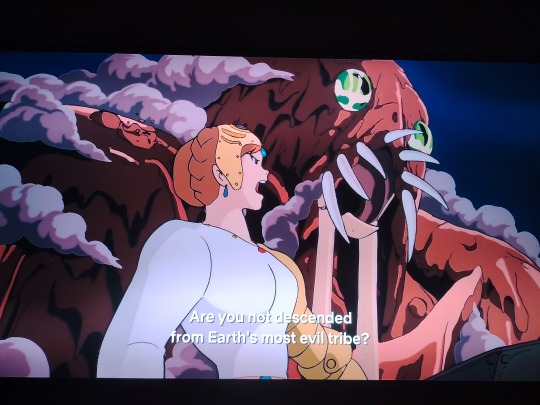


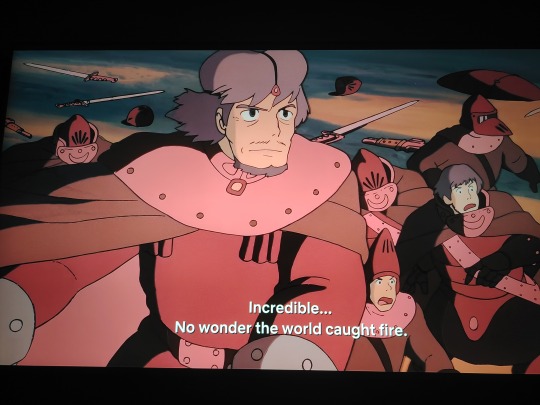

If you saw the Oppenheimer movie, you probably know that in making nuclear bombs, the scientists working on the project considered the possibility that the whole of Earth's atmosphere might get caught up in the chain reaction and we could have all, all life on Earth, have died. And then they tested the bomb anyway. And you know- maybe you did not think of a nuclear bomb while watching this movie. Maybe the skin melting off a humanoid figure after two, two, not one, explosions was not on the nose. I was looking at this scene with my mouth hanging open.
As I mentioned earlier, the characters in this movie, the humans, are too busy involving themselves in war, shooting first and asking questions later, to be able to communicate and know how to save themselves. They think their violent efforts are necessary and will lead to salvation. Some think that accumulating power under a single empire will allow them to save the world, so they go in soldiers first, attempting collaboration never. Their greatest weapon of mass destruction shoots directly at the symbolic consequence of harming nature, and they were, of course, still in a direct course for death.
They are saved by the protagonist, who is hinted at being a literal messianic figure, sacrificing her life in the process of giving something back to nature, and she is brought back to life as a symbolic representation of the forgiveness of nature.
So I would say the humans in this movie are quite lucky to have Nausicaa.
Maybe we will be as lucky. Hopefully we are not caught up in wars, at least three of armed nature, and we can do better.
Nausicaa, who throughout the movie is almost entirely consistent. She cares about all life, does not want anyone to die or be killed, even if they dirctly harmed her, and she respects, and tries to understand, nature. If there's a role model for anyone, she is it.
12 notes
·
View notes